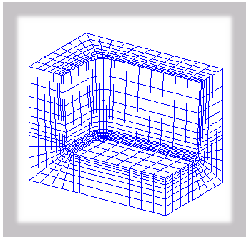XXXXXXXXXXXXXXXXXXXXXXXXXXXXXXXXXXXXXXXXXXXXXXXXXXXXXXXXXXXXXXXXXXXXXXXXXXXXXXXXXXXXXXXXXXXXXXXXXXXXXXXXXXXXXXXXXXXXXXXXXXXXXXXXXXXXXXXXXXXXXXXXXXXXXXXX''"> Problem Description
In this example problem we investigate how residual stress can be incorporated into a fatigue analysis. The techniques used here are applicable to any type of fatigue analysis but for illustration purposes we use the Crack Initiation method.
An injection mold, already in service, experiences a 12 KSI pressure load when it is filled. The mold experiences premature failure in the fillet area. To investigate ways to improve the fatigue life an overload of 20 KSI is applied to the mold to induce a compressive residual stress. Due to symmetry, only one quarter of the actual injection mold is modeled using finite elements. The design life of the mold is to last a half a million injections (Fills).
Objective
• To illustrate how residual stress can be incorporated into a fatigue analysis
• To investigate mean stress effects in Crack Initiation
• To investigate surface finish and treatment
Table 6‑1 File |
P3_HOME/mscfatigue_files/examples/mold_linear.op2 |
P3_HOME/mscfatigue_files/examples/mold_nonlin.op2 |

